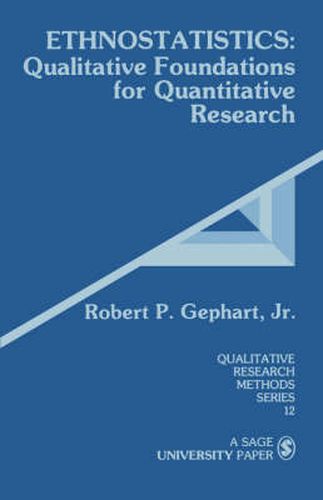Readings Newsletter
Become a Readings Member to make your shopping experience even easier.
Sign in or sign up for free!
You’re not far away from qualifying for FREE standard shipping within Australia
You’ve qualified for FREE standard shipping within Australia
The cart is loading…






Averages, ratios, means, modes, medians, tests of significance and best fit…these are now part of our everyday discourse. Yet statistics seemingly threaten to bury us under their sheer weight. Indeed, social science contributes a good deal to the proliferation of statistics while contributing relatively little to our understanding of just how such statistics are produced and used by their makers and consumers. Ethnostatistics, a term coined by Gephart, refers to the study of the social production and use of statistics. He suggests statistics can be used to produce more effective, reflexive social research. After examining the domain, examples, and levels of ethnostatistics, the author outlines a 3-level approach for producing, testing, and examining statistics.
Gephart presents his concept and examples more crisply and systematically than is usual in qualitative sociological writing. This is an implicit and welcome merging of the ‘two sociologies.’
–Contemporary Sociology
$9.00 standard shipping within Australia
FREE standard shipping within Australia for orders over $100.00
Express & International shipping calculated at checkout
Averages, ratios, means, modes, medians, tests of significance and best fit…these are now part of our everyday discourse. Yet statistics seemingly threaten to bury us under their sheer weight. Indeed, social science contributes a good deal to the proliferation of statistics while contributing relatively little to our understanding of just how such statistics are produced and used by their makers and consumers. Ethnostatistics, a term coined by Gephart, refers to the study of the social production and use of statistics. He suggests statistics can be used to produce more effective, reflexive social research. After examining the domain, examples, and levels of ethnostatistics, the author outlines a 3-level approach for producing, testing, and examining statistics.
Gephart presents his concept and examples more crisply and systematically than is usual in qualitative sociological writing. This is an implicit and welcome merging of the ‘two sociologies.’
–Contemporary Sociology